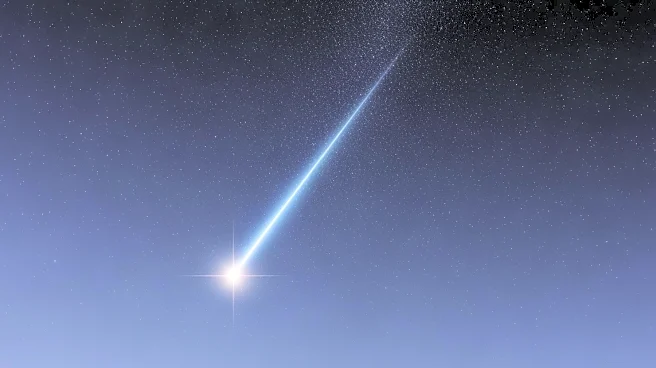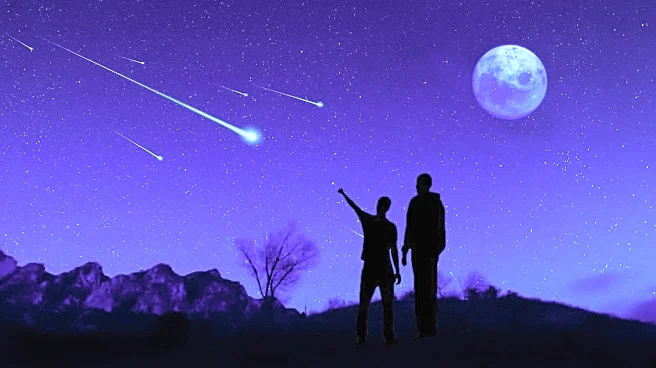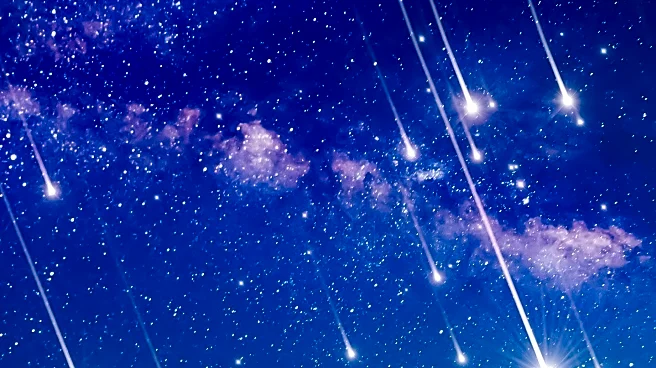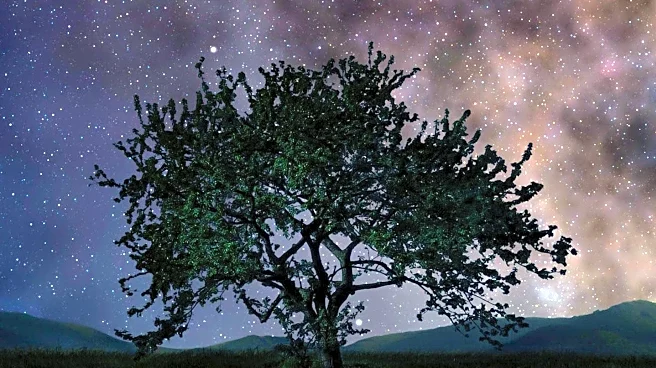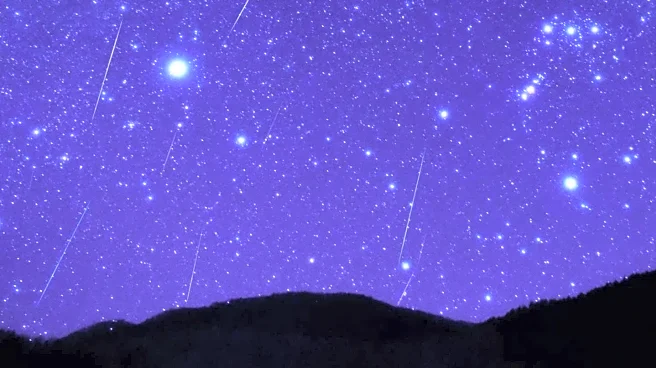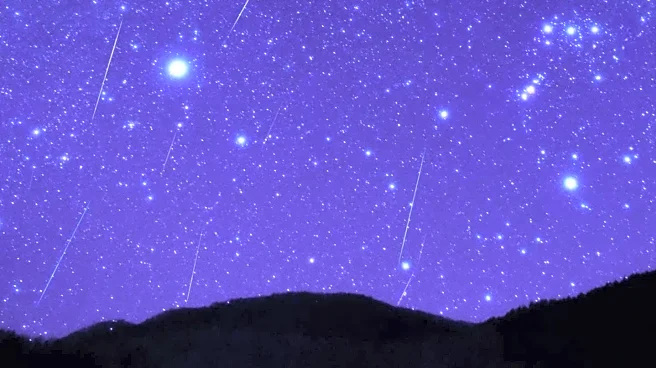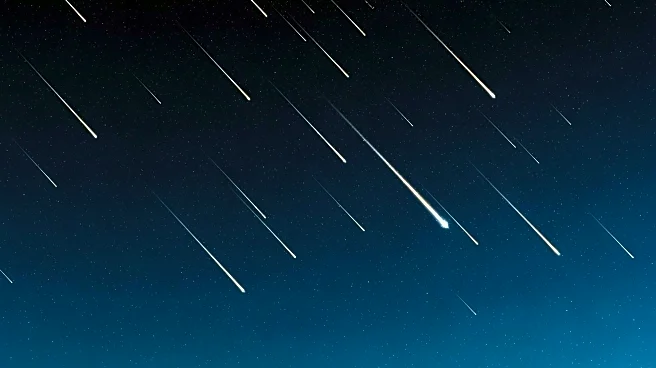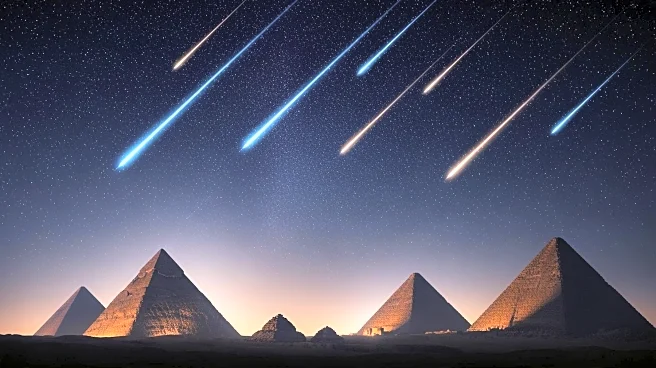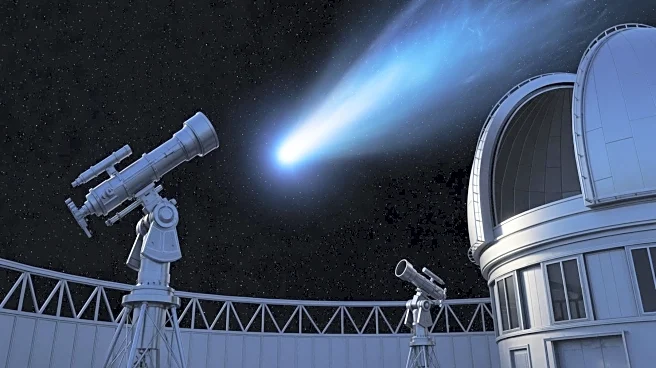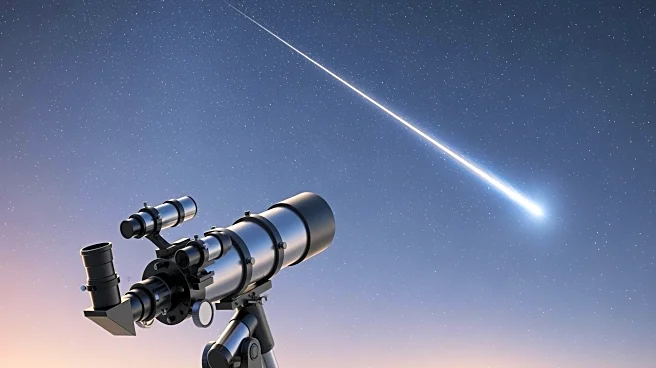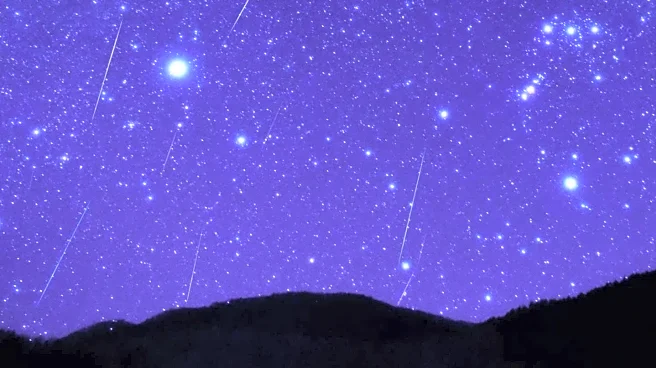What's Happening?
The American Meteor Society has announced that the Southern Taurids meteor shower is expected to reach peak visibility on the evening of November 4 to November 5. This meteor shower, originating from the debris
of comet 2P/Encke, is known for producing bright fireballs in the sky. The Southern Taurids are visible from almost anywhere on Earth, except Antarctica, and are best observed around midnight. NASA recommends finding a location away from city lights to fully enjoy the spectacle. The Northern Taurids, another meteor shower from the same comet, will peak later in November.
Why It's Important?
Meteor showers like the Southern Taurids offer a unique opportunity for the public to engage with astronomy and appreciate the natural phenomena of the universe. These events can inspire interest in space science and provide educational opportunities for schools and communities. The visibility of bright fireballs can captivate audiences and encourage outdoor activities, promoting awareness of celestial events. Additionally, such events can boost local tourism as people travel to areas with optimal viewing conditions.
What's Next?
Following the Southern Taurids, the Northern Taurids meteor shower is expected to peak on November 11 to November 12. Observers are encouraged to plan their viewing activities around these dates to maximize their experience. As meteor showers continue to be popular events, local communities and educational institutions may organize viewing parties or informational sessions to enhance public engagement.
Beyond the Headlines
Meteor showers like the Taurids highlight the importance of preserving dark sky areas, which are increasingly threatened by urban light pollution. Efforts to reduce light pollution can improve the visibility of such celestial events and contribute to environmental conservation. Additionally, these events can foster a sense of global community as people worldwide share in the experience of observing the same natural phenomenon.
